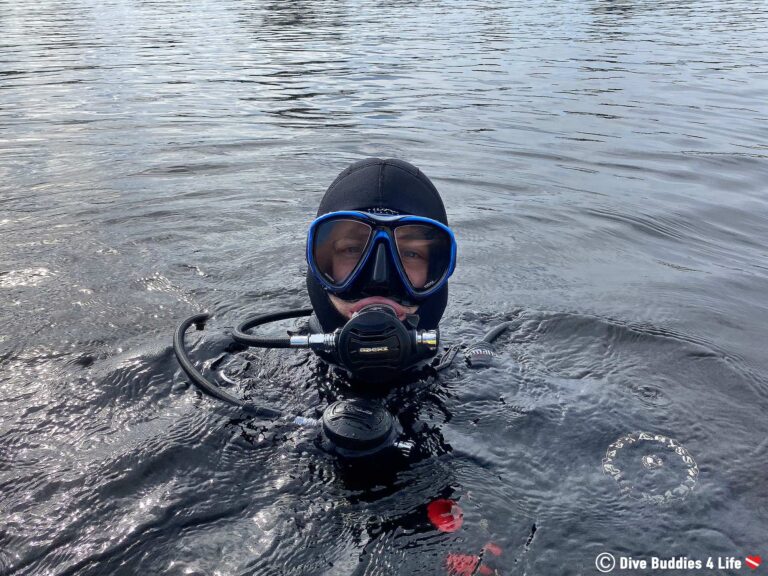Participating in activities like surfing, diving, and open water swimming require the use of a wetsuit for added protection and comfort in colder water temperatures. Wetsuits are designed to provide insulation and help maintain body heat, allowing individuals to engage in these sports for extended periods.
For many adventure seekers, engaging in sports that involve water is an exhilarating experience. However, when it comes to colder water temperatures, it becomes essential to have proper gear that can provide insulation and protection. This is where the wetsuit comes into play.
A wetsuit is a garment made of neoprene material designed to keep the body warm by trapping a thin layer of water between the suit and the skin. This layer of water is then warmed by body heat and acts as an insulator. The use of a wetsuit is crucial in several water-based sports to ensure safety and comfort. We will explore the sports that require a wetsuit and the benefits they offer. Whether you are into surfing, diving, or open water swimming, a wetsuit is an essential piece of equipment that allows you to pursue your passion even in colder conditions.

Credit: www.alamy.com
Water Sports Requiring Wetsuits
When it comes to water sports, finding the right gear is essential for both safety and performance. For certain sports, such as surfing, wakeboarding, and kitesurfing, a wetsuit is a must-have piece of equipment. Wetsuits provide insulation, protection, and flexibility, allowing athletes to enjoy their favorite water activities regardless of the temperature or water conditions.
Surfing
Surfing is a sport that requires immense skill, balance, and a deep connection with the ocean. Whether you’re a beginner catching your first waves or an experienced rider looking to conquer big breaks, a wetsuit is vital for optimal performance.
Wetsuits for surfing are designed to keep you warm in chilly waters, insulating your body against the cold temperatures and wind chill. The neoprene material used in wetsuits traps a thin layer of water between your skin and the suit, which your body then heats up, providing a thermal barrier against the cold water. Additionally, the snug fit and flexibility of wetsuits offer freedom of movement, allowing surfers to paddle, pop up, and carve through the waves with ease, enhancing their overall performance.
Wakeboarding
Wakeboarding combines elements of water skiing, snowboarding, and surfing, making it an exhilarating and physically demanding sport. Whether you’re gliding across a calm lake or performing flips and tricks on the wake, a wetsuit is a necessity to protect your body from impacts and exposure to the water.
Wetsuits specifically designed for wakeboarding are often thicker and more padded in critical impact areas, such as the knees and elbows, to cushion against falls and heavy landings. The added buoyancy provided by the wetsuit also assists in keeping wakeboarders afloat, reducing fatigue and conserving energy during longer sessions. With the additional insulation and protection, wakeboarders can push their limits and shred the water with confidence.
Kitesurfing
Kitesurfing, also known as kiteboarding, is a thrilling water sport that combines elements of surfing, wakeboarding, and flying a kite. Whether you’re gliding across the water or launching yourself into the air for awe-inspiring jumps, a wetsuit is essential for comfort and safety.
Wetsuits designed for kitesurfing are typically thinner and more flexible than those used for surfing or wakeboarding. This allows for greater freedom of movement in both the upper and lower body, allowing kitesurfers to maneuver their kite and board with ease. The wetsuit also provides protection against wind chill and abrasions from the water, ensuring a comfortable and enjoyable kitesurfing experience, no matter the conditions.
Benefits Of Wearing A Wetsuit
Discover the advantages of wearing a wetsuit in sports such as surfing, diving, and triathlon – it provides thermal insulation, buoyancy, and protection against abrasions, allowing athletes to perform at their best in water.
When participating in sports that require being in the water for extended periods, wearing a wetsuit can provide several benefits that enhance both performance and safety. The use of a wetsuit offers thermal insulation, protection from harmful UV rays, and enhanced buoyancy. Let’s delve into each of these advantages in detail.
Thermal Insulation
One of the primary advantages of wearing a wetsuit is the thermal insulation it provides. Made from neoprene, a synthetic rubber material, wetsuits are designed to trap a thin layer of water between the suit and the body. This water layer is then warmed by the body’s heat to create a thermal barrier that helps keep the wearer warm in chilly waters.
Wetsuits act as a second skin, fitting snugly to the body to minimize water circulation and heat loss. The neoprene material is a poor conductor of heat, aiding in maintaining body temperature even in colder environments. With proper insulation, athletes can stay comfortable and focused, enabling them to perform at their best over prolonged periods in the water.
Protection From Uv Rays
While enjoying water sports, it’s crucial to protect the skin from harmful UV rays. A wetsuit acts as a shield against the sun’s rays, safeguarding the wearer’s skin from potential damage caused by prolonged exposure. The neoprene material used in wetsuits offers inherent UV resistance, providing a protective barrier between the skin and the sun’s harmful ultraviolet radiation.
Additionally, wetsuits often have built-in UPF (Ultraviolet Protection Factor) ratings, indicating the level of protection they provide against UV radiation. These ratings can help athletes select wetsuits that offer the desired level of sun protection, ensuring peace of mind while engaging in water activities.
Enhanced Buoyancy
Wetsuits provide an additional layer of buoyancy, making it easier for athletes to stay afloat while participating in water sports. The neoprene material used in wetsuits is inherently buoyant, helping the wearer to float and conserve energy during activities such as swimming, surfing, or diving.
The increased buoyancy offered by a wetsuit can enhance the efficiency and effectiveness of movements in the water by reducing drag and allowing for smoother, more streamlined motions. This buoyancy support can be particularly beneficial for beginners or those lacking strong swimming skills, as it helps to improve overall stability and control in the water.
By investing in a wetsuit, athletes can benefit from thermal insulation, protection from harmful UV rays, and enhanced buoyancy. These advantages make wearing a wetsuit a valuable addition to any water sports enthusiast’s gear, ensuring comfort, safety, and improved performance.
Choosing The Right Wetsuit
When participating in sports that require a wetsuit, it is crucial to choose the right one that offers the perfect combination of comfort, flexibility, and protection. A wetsuit not only keeps you warm in cold water but also provides buoyancy and protects you from abrasions and stings. Whether you’re into surfing, diving, kayaking, or any other water sport, selecting the right wetsuit will enhance your performance and provide a more enjoyable experience. To help you make an informed decision, consider these essential factors: material, size and fit, and features and accessories.
Material
The material of a wetsuit plays a vital role in determining its performance in various water temperatures. Typically, wetsuits are made of neoprene, a synthetic rubber known for its insulating properties. Neoprene traps a thin layer of water against your skin, which your body then warms up, keeping you warm even in cold waters. It also offers excellent flexibility, allowing for unrestricted movement. Super stretch neoprene is particularly popular, as it provides even greater flexibility and comfort. When selecting a wetsuit, consider the thickness of the neoprene as it determines the level of insulation. Thicker neoprene is suitable for colder temperatures, while thinner neoprene is better for warmer conditions. Furthermore, some wetsuits feature additional insulation in key areas such as the chest or back, providing extra warmth in critical zones.
Size And Fit
Getting the right size and fit for a wetsuit is crucial for optimal performance and comfort. An ill-fitting wetsuit can restrict movement, cause discomfort, and impair thermal insulation. To ensure a proper fit, make sure to measure your height, chest, waist, and hips accurately. Different wetsuit brands may have slightly different size charts, so consult the specific manufacturer’s sizing guide. Additionally, consider your body shape and proportion. Some wetsuits are designed for a more athletic fit, while others are more generous. Be mindful that a wetsuit should fit snugly but not overly tight. A proper fit allows a small amount of water to enter and warm up against your body while still maintaining an effective seal against flushing.
Features And Accessories
When choosing a wetsuit, consider the specific features and accessories that can enhance your performance and convenience. Some wetsuits come equipped with reinforced knees or durable panels to improve durability and protection. Others may have seamless construction to minimize water intake and ensure a more comfortable fit. Additionally, certain wetsuits offer built-in hoods or detachable hoods for added warmth during colder outings. Zipper placement is another important factor to consider, as back zip, chest zip, or zip-free options each have their advantages. Some wetsuits even have integrated pockets for storing small essentials or come with built-in booties or gloves. Select the features and accessories that align with your specific needs and preferences to optimize your performance and overall experience in the water.

Credit: m.facebook.com

Credit: www.instagram.com
Are Kayaking Paddles Essential for Wetsuit-Requiring Watersports?
Kayaking paddles are crucial for steering and propulsion in wetsuit-requiring watersports. Engaging in sports with kayaking paddle enhances control and efficiency, ensuring a smoother experience in dynamic water conditions. Without the proper paddle, maneuvering becomes challenging, making it a key piece of equipment for safety and performance in such aquatic activities.
Frequently Asked Questions On Sports That Require A Wetsuit
What Are Some Sports That Require A Wetsuit?
Sports that require a wetsuit include surfing, diving, paddleboarding, kayaking, open water swimming, and triathlons. A wetsuit provides insulation and protection against cold temperatures, making it essential for these water-based activities. Additionally, a wetsuit enhances buoyancy and flexibility, improving performance and safety in the water.
Conclusion
Wetsuits are essential for various sports, providing both protection and thermal insulation. From surfing to diving and paddleboarding, these activities require the use of a wetsuit to ensure comfort and safety in the water. Whether you’re a seasoned athlete or a beginner, investing in a good quality wetsuit is a wise choice to enhance your performance and enjoy these sports to the fullest.
Stay warm, protected, and ready for adventure with a wetsuit tailored to your sport of choice.





